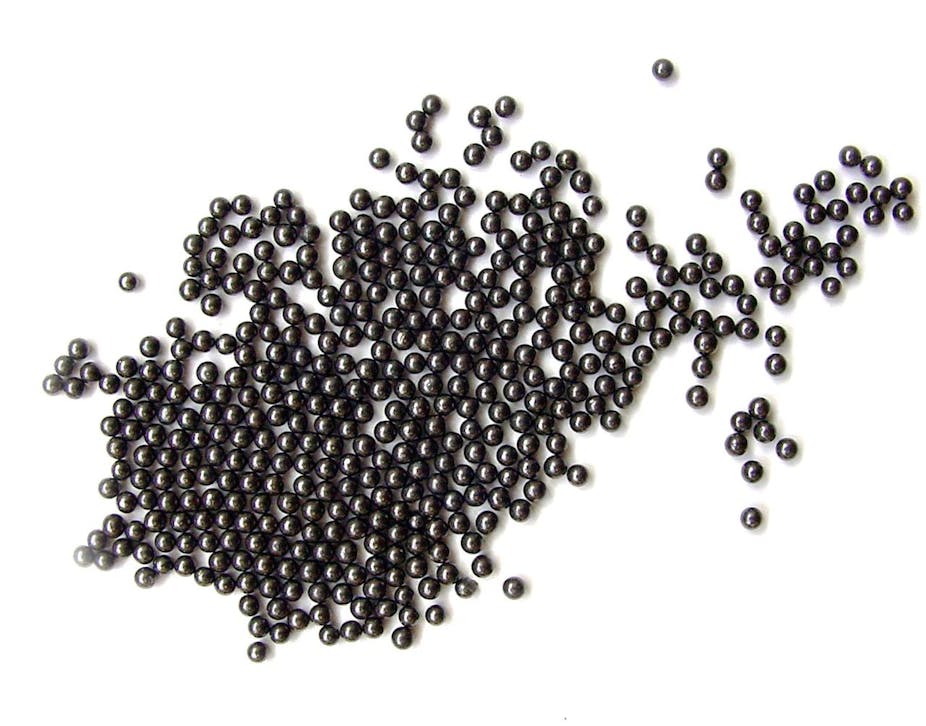Despite the environment being, according to the Olympic Charter, the “third dimension of Olympism”, the International Olympic Committee (IOC) has yet to act on the enormous tonnage of lead shot scattered around by Olympic clay pigeon shooters. I have personally warned the IOC Executive of this problem repeatedly during the past 20 years, to no avail.
While this doesn’t apply to the Winter and Summer Olympic Games directly, where spent bullets are trapped directly behind the targets, many tonnes of shot accumulate over the years of practice by Olympic hopefuls and contenders from all nations supporting these events. This shot is rarely recovered: it is ingested by wildlife, contaminates soils, and pollutes groundwater. The harmful effects of lead poisoning have been known for centuries.
There is much documented evidence of lead shot poisoning livestock where shooting fall-out zones extend over agricultural lands. Scientific analyses of the toxic effects of lead exposure on wildlife appear in many respected scientific journals. A recent study revealed banning lead shot in Spain had reduced cases of lead poisoning by 50%.
Yet there is widespread denial of this problem. Sceptics denigrate the quality of the scientific information. The International Shooting Sports Federation (ISSF) which regulates all Olympic shooting contends: “the whole topic of lead and other heavy metals is one where emotion rules and logic does not apply.” Similarly, the European Shooting Confederation (ESC) states: “Several countries have banned or will prohibit the use of lead shots for all purposes, however without any scientifically good reason.”
It is argued, incorrectly, that suitable lead-free ammunition is too expensive and ineffective against clay targets. Regrettably, the effects of lead exposure and toxicity are rarely seen by those who cause it. In papers published last year in the journals AMBIO and Environmental Policy and Law I showed that there are no such barriers to the use of steel shot in Olympic shooting, and laid out the steps the IOC could take to address the problem, consistent with its charter obligations.
In fact, it is an awareness of the toxicity of ingested lead shot to wildlife that has led a growing number of jurisdictions in North American, Australia and Europe to require the use of lead-free shot. For example, it has been banned for wetland shooting in the US since 1991, and in Canada since 1999.

But still clay target shooting evades regulation. This is due to the piecemeal manner in which governments have addressed the issue, and the vociferous opposition from the shooting lobby. Even in the Netherlands and Denmark, countries with total bans on lead shot, Olympic shooters are required to practice and qualify with lead shot cartridges, in specially-designated shooting grounds. Such are the regulations of the ISSF which require lead shot.
But Olympic rules take precedence over national rules for all sanctioned events, including shooting. A decision from the IOC to mandate lead-free shot for all Olympic events and qualifications would be an important precedent and could promote efforts to reduce lead shot use in other sporting events.
No statistics are kept on the number of athletes who engage in Olympic shooting in each nation, nor are records kept of the amount of ammunition used. An Olympic qualifier could easily fire around 1,000 cartridges a week to maintain the proficiency required to be a contender for the medal-winner’s podium. This corresponds to about 1.3 tonnes of lead shot per shooter each year – an enormous quantity of a known neurotoxin deposited worldwide, not to mention the shot still distributed throughout the environment from previous years. Only between four and six pieces of lead shot ingested at once are sufficient to fatally poison a duck, pheasant, or similar bird.

In North America and Europe, the number of people engaged in Olympic trap and skeet shooting is small compared to the total number engaged in the World Championships, European Championships, National Championships, local events, and recreational practice shooting. All of these activities use lead shot, and regardless of the event’s level, lead shot is still released into the environment. It is not ammunition manufacturers that are the main source of this impasse – they have already developed and marketed internationally approved lead-free substitutes. It is the sporting organisations that have resisted change, hence my calls to the IOC.
International campaigns have been successful in banning lead from petrol, paints, solders, glass, glazes, and other products for good reason – its effects on health are well known. Then why has lead ammunition resisted regulation for so long? Society demanded prompt changes when human health was at risk, but seems less concerned when it is wildlife health at stake. But we know that lead shot used in hunting does enter the human food chain.
Simply put, the toxicity of lead shot is a problem wherever it is used and for whatever purpose. The IOC should live up to its environmental and humanitarian founding charter and ban lead shot from its events, firing a shot that would reverberate throughout the shooting world.

